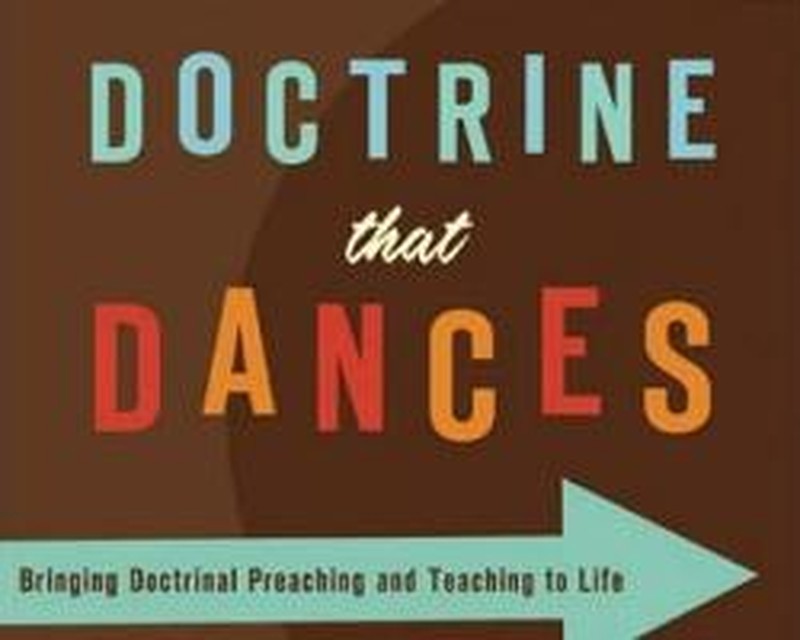Best Preaching Books of 2007
- Michael Duduit Michael Duduit is Editor of Preaching magazine.
- Published Mar 11, 2008

At a time when so much of the conversation on preaching deals with presentation, Robert Smith has reminded us effective teaching must also take the theological task seriously. He makes his case so well that his book, Doctrine That Dances (B&H Publishing), is our Preaching Book of the Year.
Smith helps his readers understand what doctrinal preaching is and why it is so important, then uses two metaphors to develop his insights: the exegetical escort and the doctrinal dancer. He explains: “The function of the exegetical escort is to embrace the text of Scripture in order to usher the hearer into the presence of God for the purpose of transformation … The function of the doxological dancer is to communicate the doctrinal message of the Bible with accuracy and ardor so the exuberant hearer exults in the exalting of God.”
The preacher, Smith argues, is first and foremost a worshipper. When we preach, we worship. As a result, “Doctrinal preaching that is both accurate in its textual interpretation and ardent in its proclamation influences and motivates the hearers to be exuberant in their hearing of the message and to exult or rejoice in God during the preaching event while they are exalting God in the worship service.”
Drawing on a broad knowledge of the homiletical tradition and his own experience in the African-American church, Smith guides us through the “sermonic dance steps for doctrinal preaching.” In addition to his outstanding discussion of the doctrinal preaching task, Smith offers two sample sermons to demonstrate how doctrine can truly dance in the pulpit.
Robert Smith is one of the finest preachers of our age, and in Doctrine That Dances he displays much of the exegetical insight and homiletical passion that make him so effective. Smith demonstrates the urgency of doctrinal preaching for today and offers practical counsel that will help such preaching dance rather than drag.
Smith’s book is one of several outstanding titles in preaching to be released in the past year. Another excellent volume that will benefit any preacher is Preach the Word (Crossway), edited by Leland Ryken and Todd Wilson. The volume consists of sixteen essays on expository preaching, collected in honor of Kent Hughes.
Preach the Word includes contributions from a who’s who of evangelical scholarship, including J.I Packer, Duane Litfin, D.A. Carson, John MacArthur, Bruce Winter, David Jackman, Paul House, and more. Hughes has provided a model of faithful and effective biblical exposition, and this volume is packed with solid insights that will help preachers strengthen their own proclamation of God’s Word.
One of the most influential scholarly voices in homiletics in recent years has been Sidney Greidanus. (His classic book The Modern Preacher and the Ancient Text was a Preaching Book of the Year when it was published.) His last book was Preaching Christ from the Old Testament, and his most recent book, Preaching Christ from Genesis (Eerdmans), builds on that remarkable foundation.
As Bryan Chapell has observed, Greidanus helps us understand “how the entire book of Genesis structures God’s agenda and our understanding of Christ’s redeeming work.” Anyone seriously interested in biblical preaching will want to spend time with this powerful work.
Over the past year, we have reviewed other excellent books on preaching. Among the best of the past year:
Donald R. Sunukjian’s Invitation to Biblical Preaching (Kregel) is primarily designed as a preaching textbook, but the volume will also prove valuable to veteran preachers looking for new insights and perspectives. He notes that biblical truth must be presented “in a manner that is relevant to the contemporary listener.” That involves not simply teaching the details of a passage but applying the biblical principle to contemporary listeners and drawing pictures of what those implications would look like today. Sunukjian has given us a practical guide to developing 21st century sermons that are biblically faithful, clear, and engaging. This is not ivory-tower theory; Invitation to Biblical Preaching offers down-to-earth insights and enough examples to spark dozens of great sermon ideas for any preacher!
In Preaching with Variety (Kregel), Jeffrey Arthurs helps us as preachers better understand the “rhetorical dynamics” of the various literary genres found in Scripture, and he helps us think strategically about how to preach such texts effectively in a way that honors the form in which God inspired them. Arthurs deals with the major literary forms he identifies in Scripture: poetry, narrative, parables, proverbs, epistles, and apocalyptic. Taking each category, he discusses the nature of the genre and how it communicates truth within that literary form. He then offers practical communication insights for preaching in a way that is faithful to that genre and takes advantages of its natural assets. The book offers valuable and practical insights that will help any preacher better communicate biblical truth with freshness and faithfulness.
In The Shape of Preaching (Baker), pastor Dennis Cahill seeks to help pastors understand the various approaches to sermon theory and design which have entered the homiletical conversation in recent years. As he points out, these are not just pragmatic or methodological questions: “Sermon design is not just a matter of what works. Sermon design also relates to theology, literary form, and to the culture of the world in which we live.” The Shape of Preaching will be a useful introduction for young ministers as well as a helpful refresher for veteran preachers.
Greg Heisler’s book Spirit-Led Preaching (B&H Academic) is an important contribution to the literature in preaching. Heisler, an assistant professor of preaching at Southeastern Baptist Seminary, offers a comprehensive, biblical evaluation of the role the Holy Spirit plays in the preparation and presentation of the preached Word of God.
Preaching the Cross (Crossway) is a collection of presentations originally offered at the 2006 Together for the Gospel conference. The essays represent some of the best contemporary Reformed voices on preaching: Mark E. Dever, J. Ligon Duncan III, R. Albert Mohler Jr., R.C. Sproul, John Piper, C.J. Mahaney, and John MacArthur. Anyone with an interest in preaching will enjoy the insights offered in this useful volume. As Philip Ryken notes, “It is a call for other ministers of the gospel to faithfully proclaim the message of the cross and the empty tomb.”
More and more, pastors are using scenes from popular movies as sermon illustrations. In Hearing a Film, Seeing a Sermon (Westminster John Knox Press), Timothy B. Cargal argues we need to move a step further by learning to interpret movies much as we would exegete a biblical text, allowing us to use film as a powerful tool to engage contemporary listeners and connect them to biblical truth.
The Power of Persuasive Preaching (Chalice Press) by Ben J. Katt is written in the form of a fable through which the author offers counsel about how to think persuasively and to design messages that will connect and persuade. Pastors will particularly appreciate the collection of practical advice collected as an appendix.
What Do They Hear? Bridging the Gap Between Pulpit and Pew (Abingdon Press) by Mark Allan Powell examines how our cultural backgrounds and experiences impact how we read and interpret biblical texts. His research provides a helpful reminder that there is a gap between what we may say and what the reader hears, and as preachers we face the challenge of understanding and bridging that chasm.
In Graceful Speech: An Invitation to Preaching (Westminster John Knox), Lucy Lind Hogan offers a nicely written introductory textbook for preachers. Hogan – an Episcopal priest who teaches at Wesley Seminary – discusses what it means to be a preacher, then explores the crafting and delivery of the sermon. The book contains helpful insights for veteran preachers as well as beginners, and will make a useful text, particularly in the mainline college and seminary setting.
In The Big Idea (Zondervan), Dave Ferguson, Jon Ferguson and Eric Bramlett prescribe a solution to the problem of information overload in today’s church: Each week identify one big idea on which your church can focus, then develop a strategy for implementing that across all the teaching platforms of the congregation. The authors spend much of the book showing how their own Community Christian Church of Naperville, Illinois, has done precisely that. They offer an abundance of ideas on planning and developing a “big idea” model in the local church. This book is packed with solid and helpful ideas, and the “big idea” of the book is one that churches should carefully consider trying in their own setting.


















